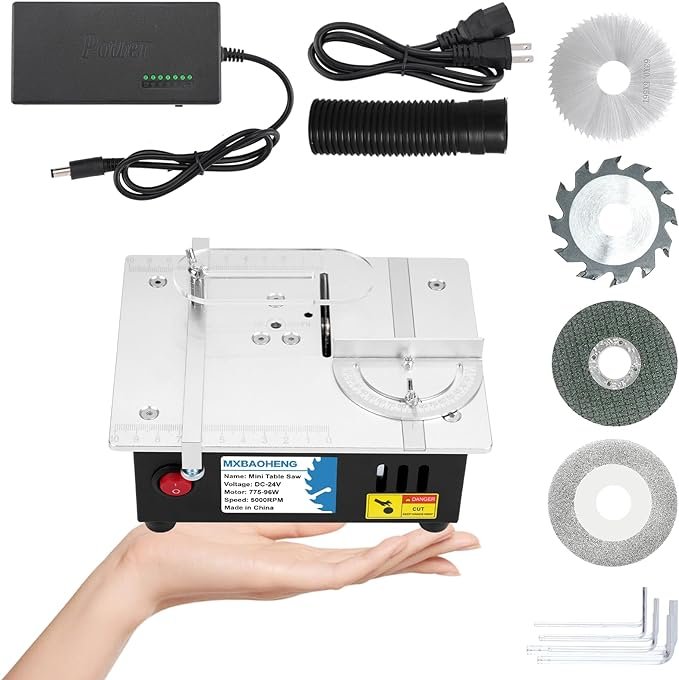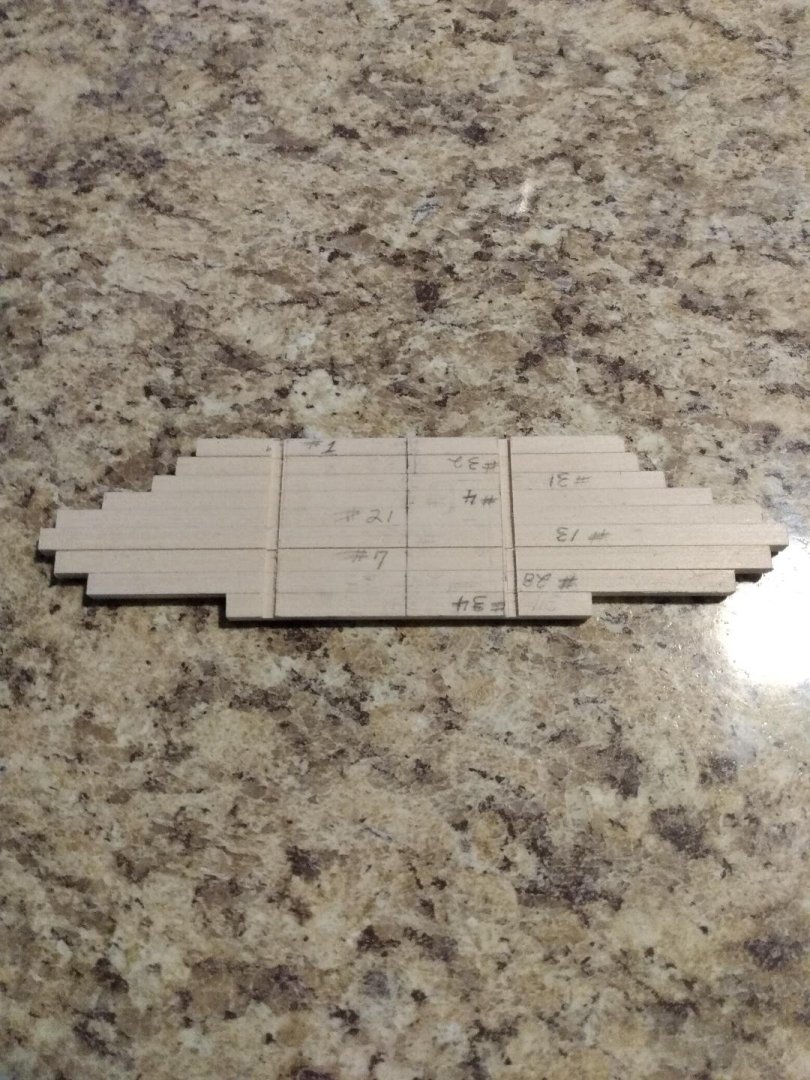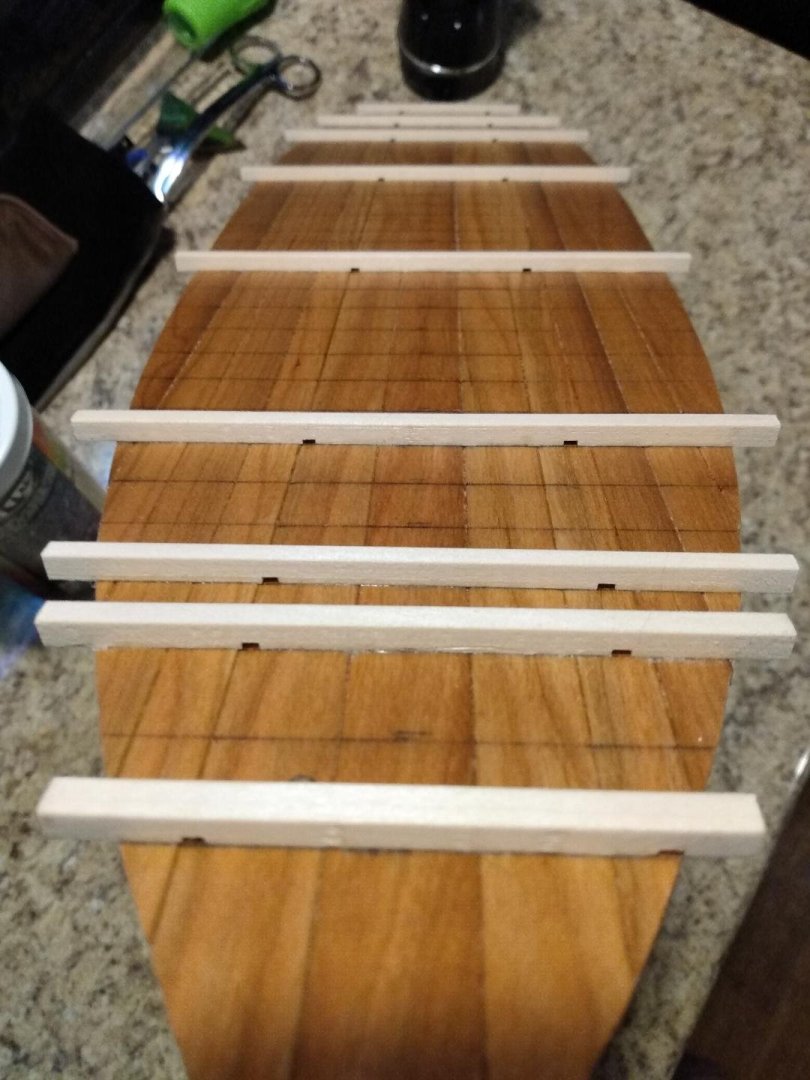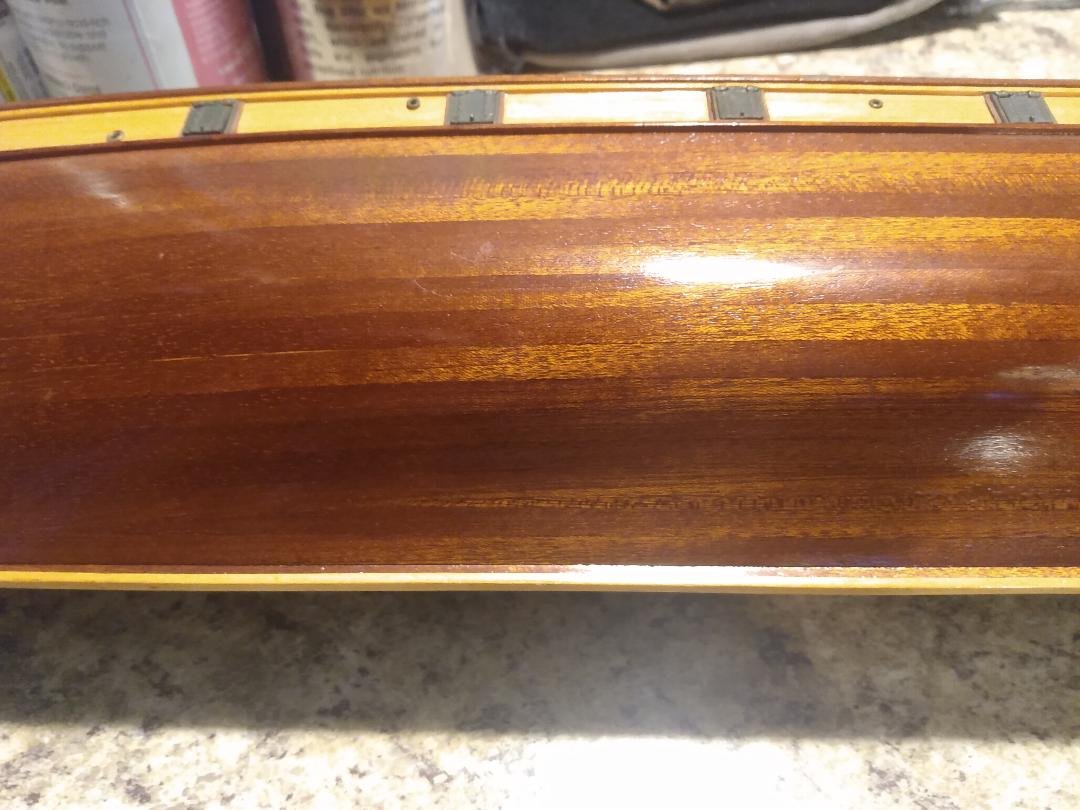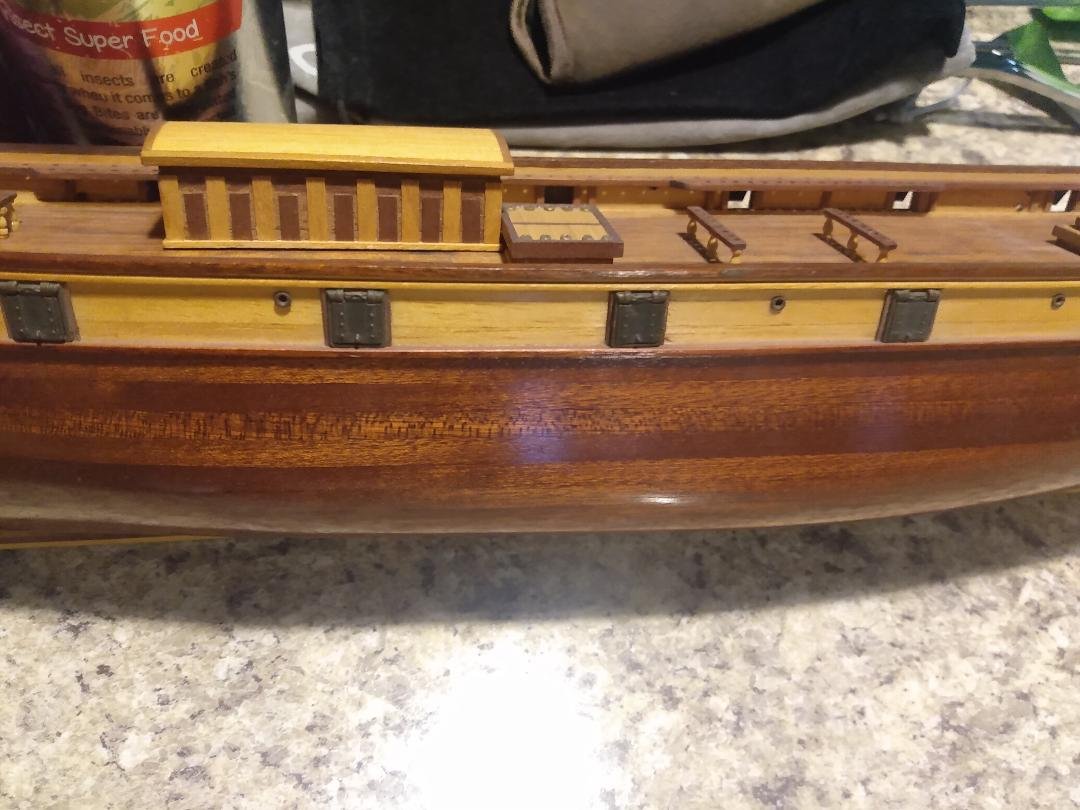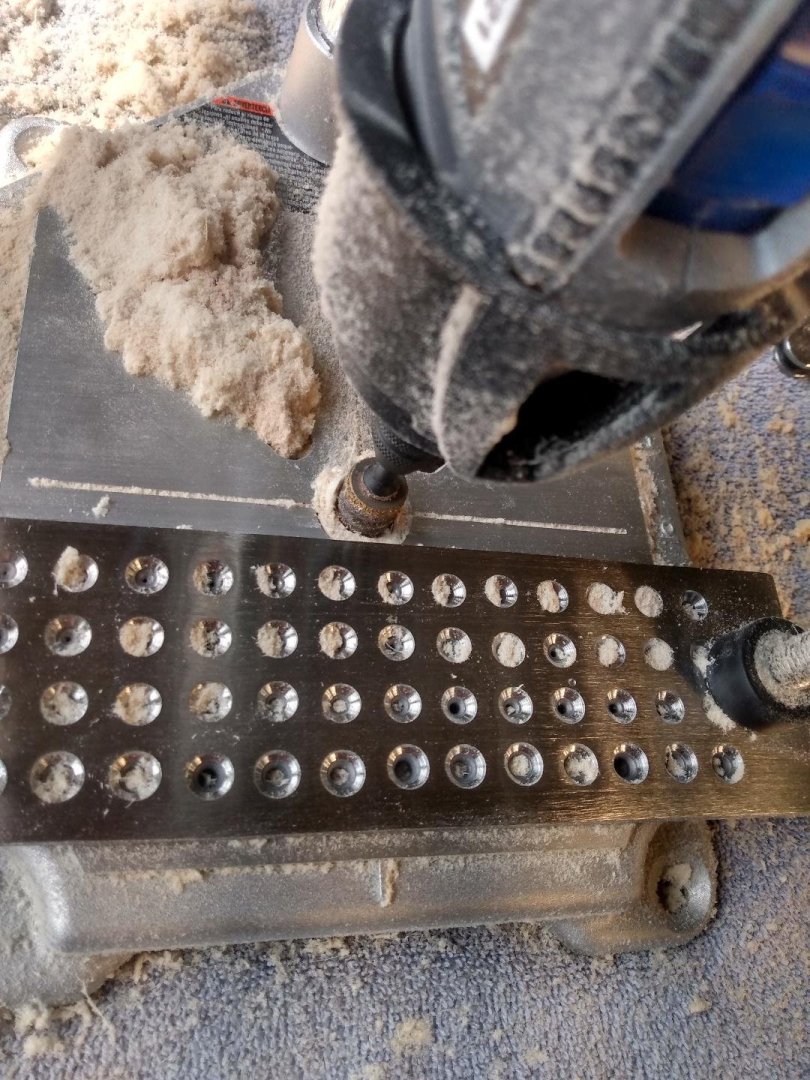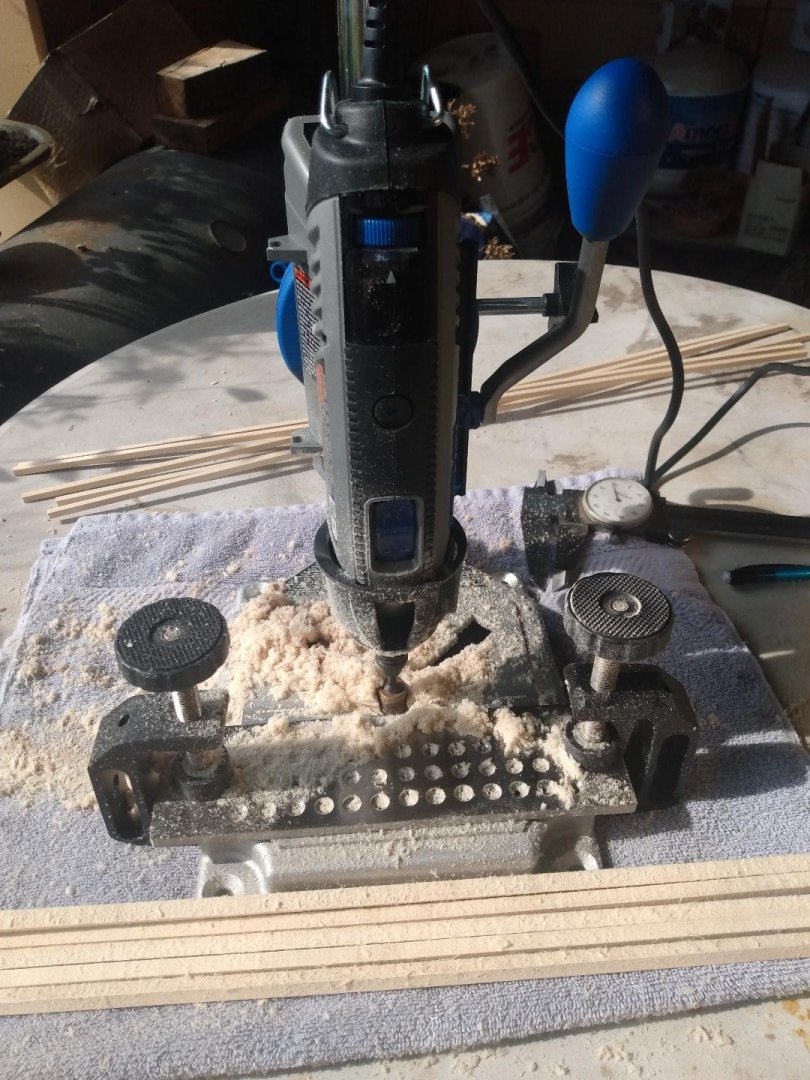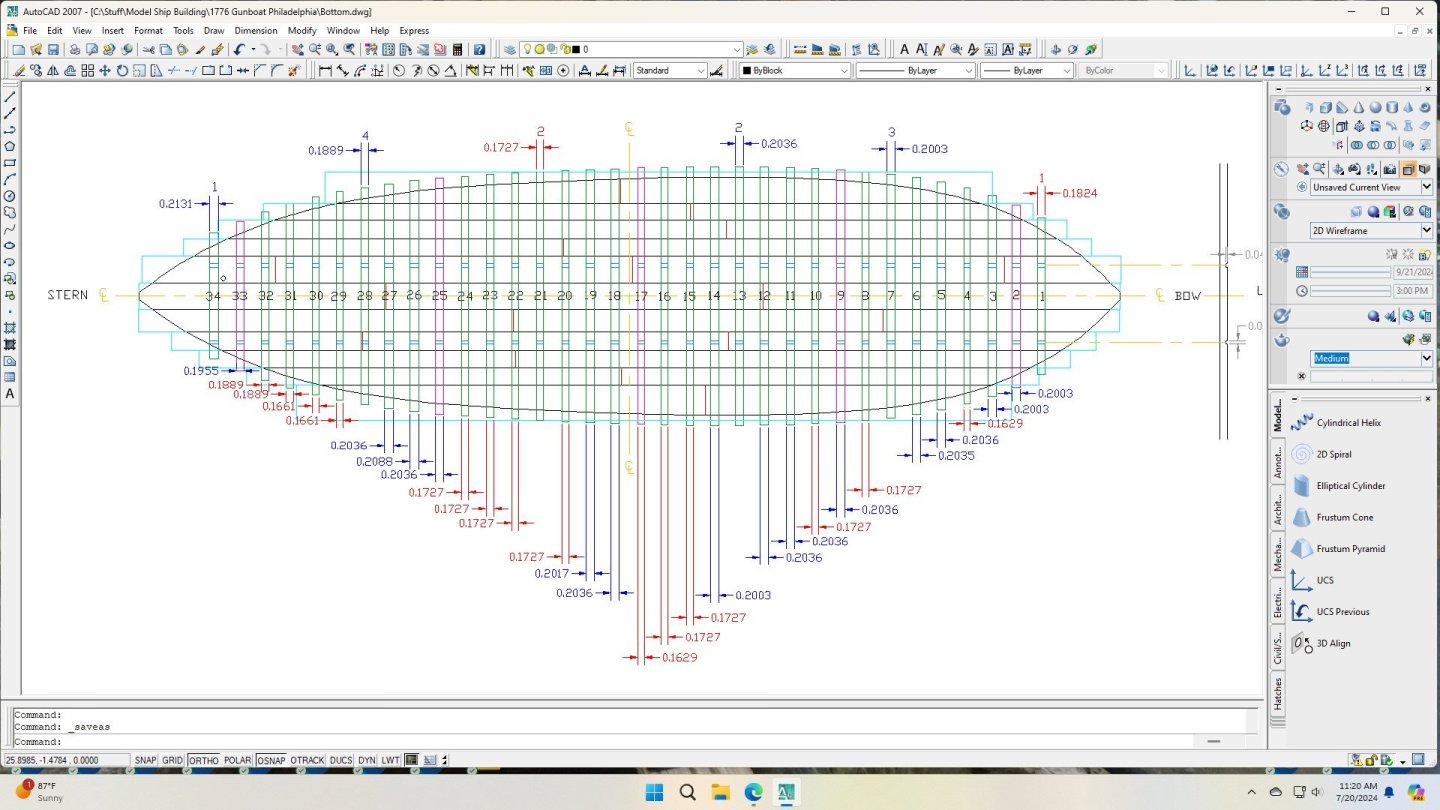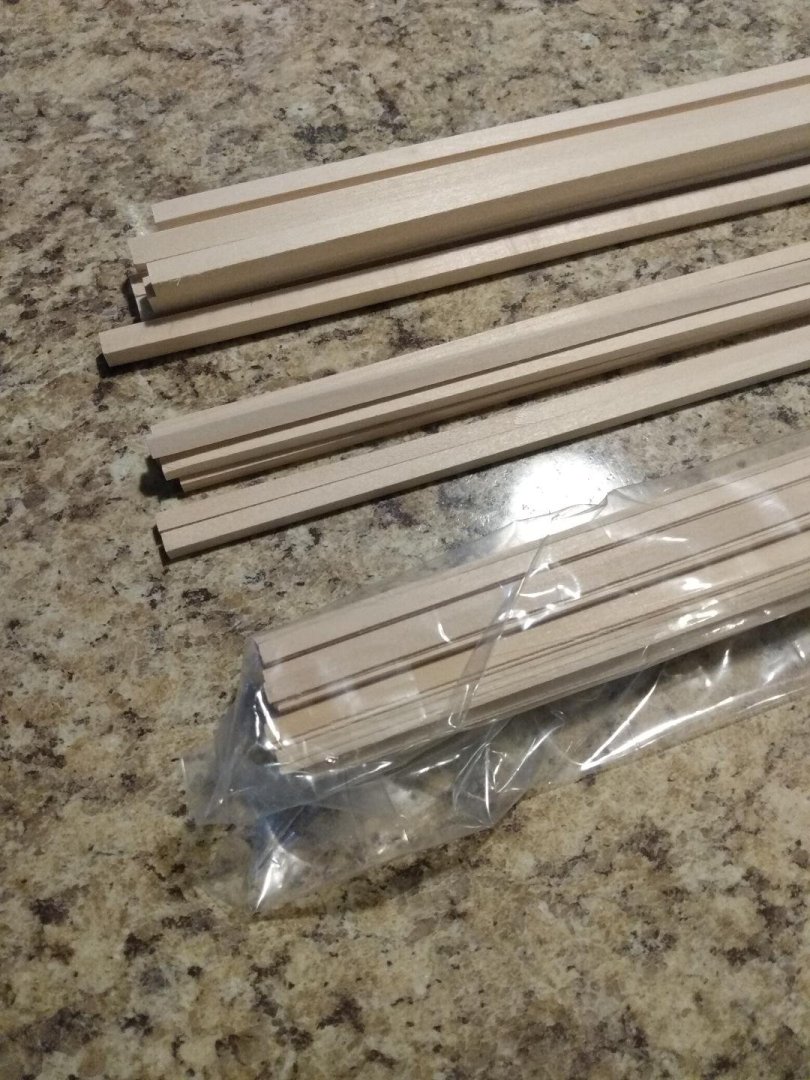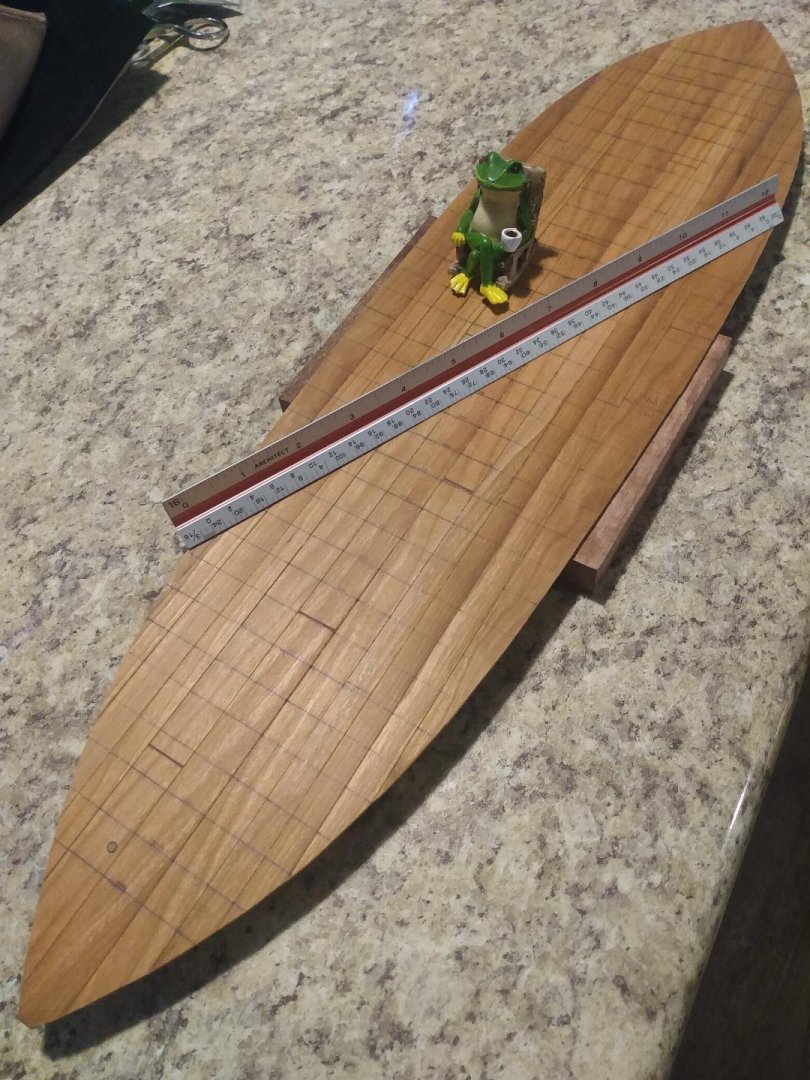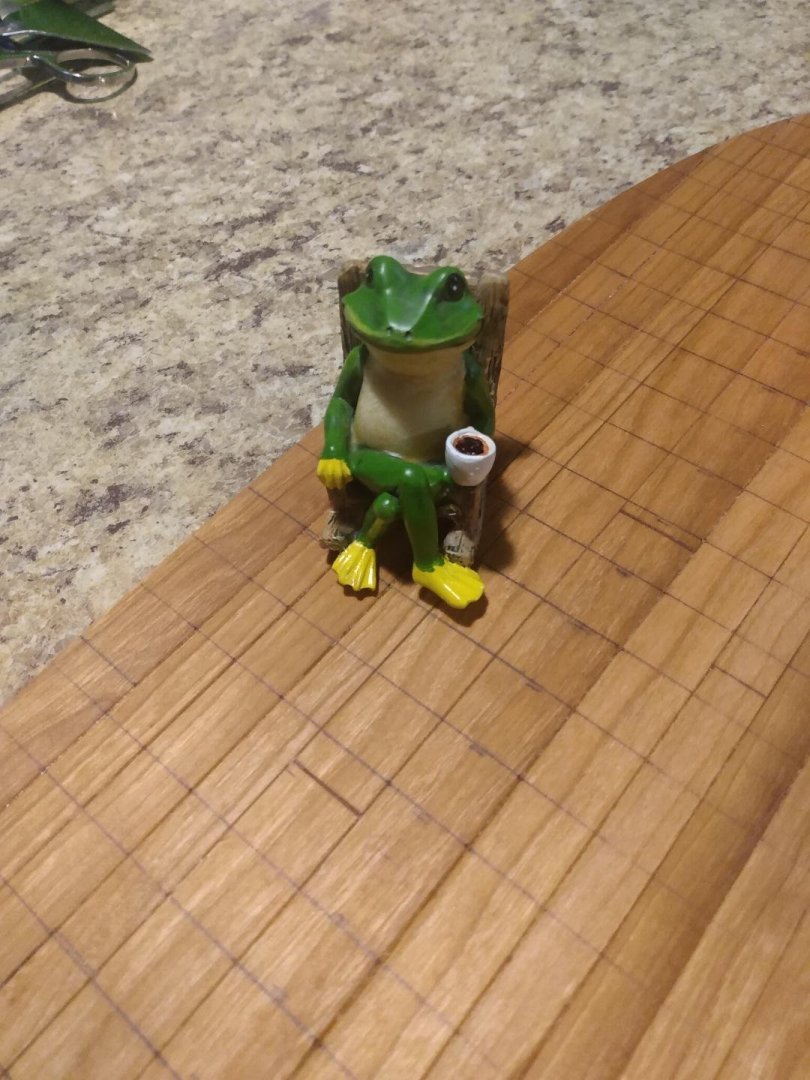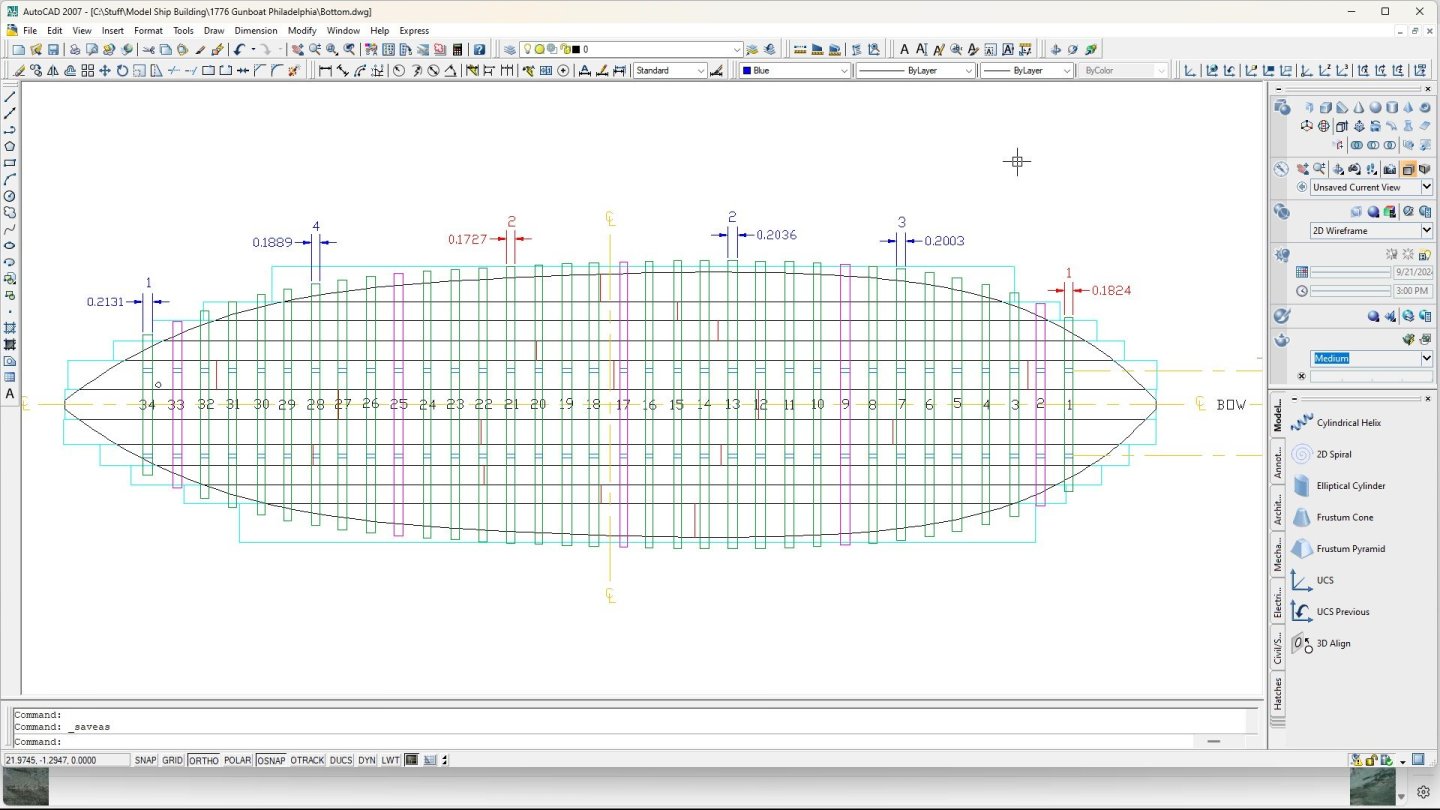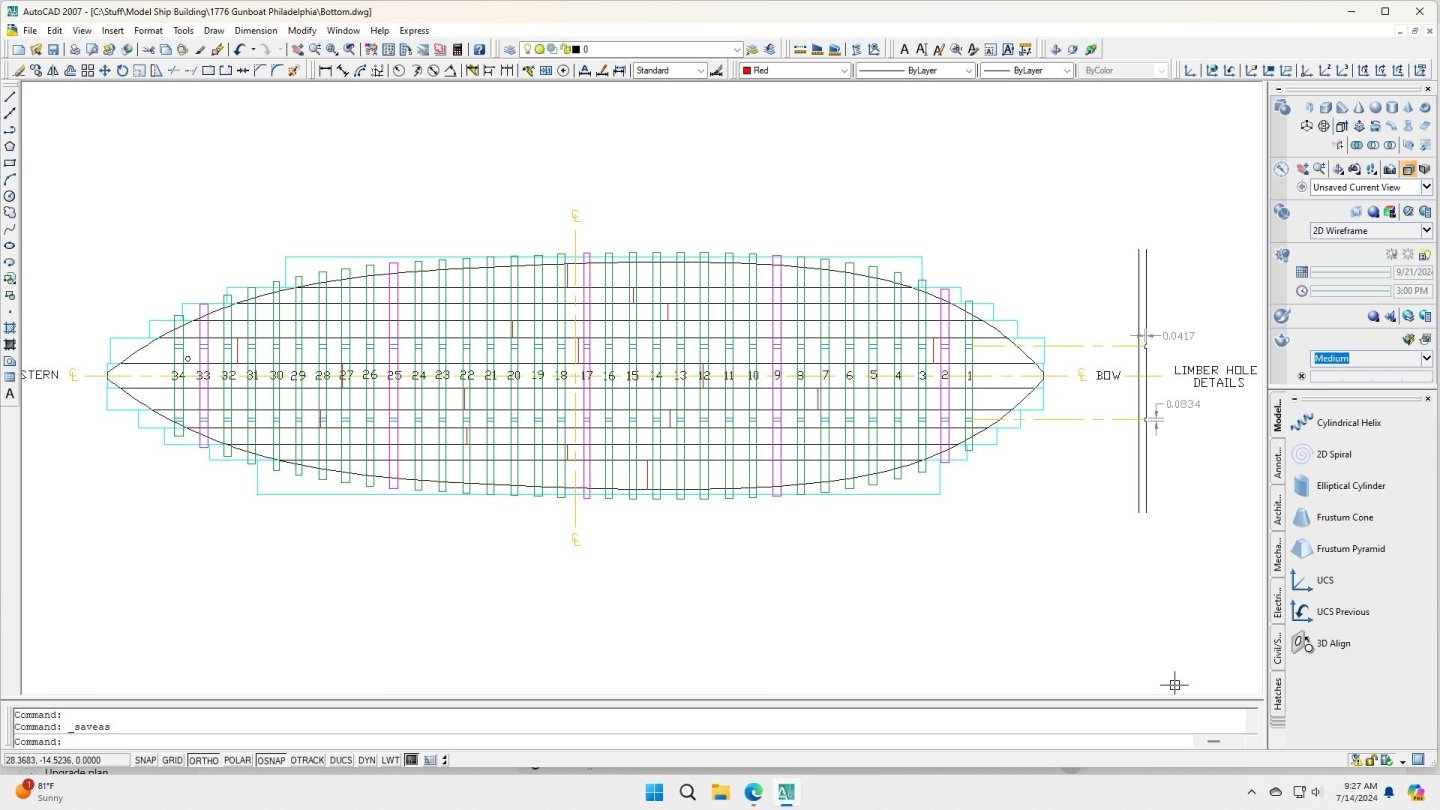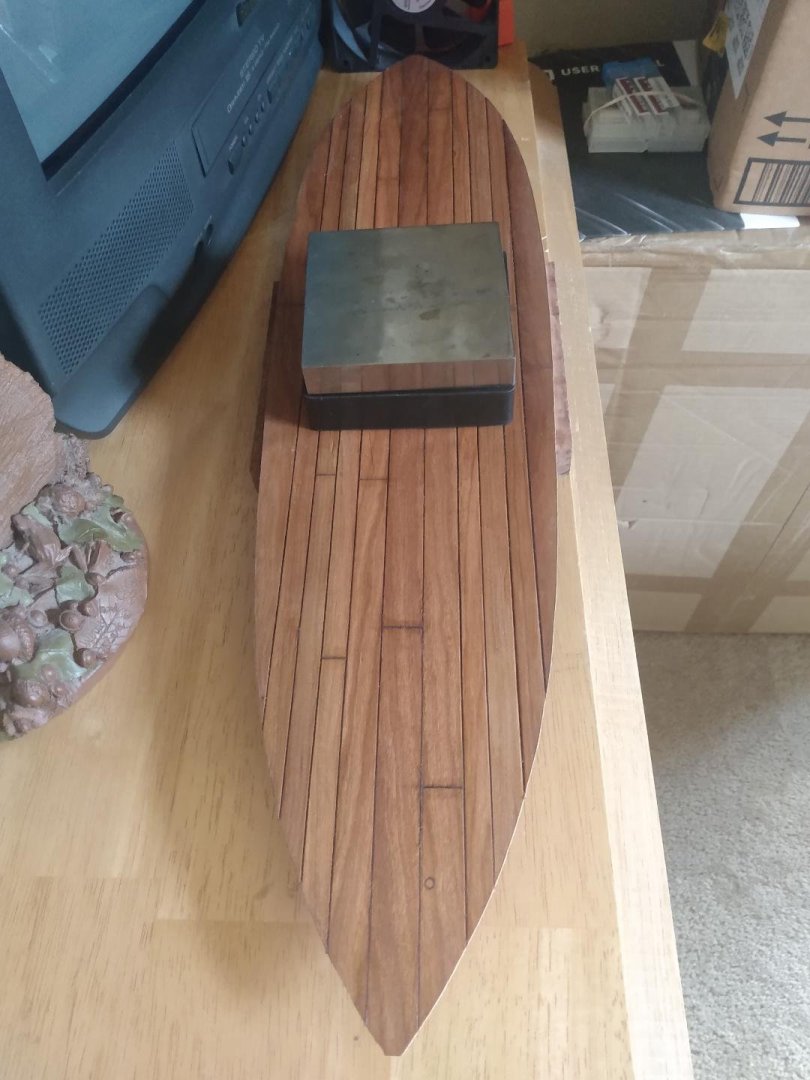-
Posts
725 -
Joined
-
Last visited
Content Type
Profiles
Forums
Gallery
Events
Everything posted by tmj
-
Very fine craftsmanship, indeed! I'm a late comer to your build log but really enjoy your style of building. A very pleasant combination of aesthetics, artform and skill!
- 201 replies
-
- Oyster Sharpie
- first scratch build
-
(and 1 more)
Tagged with:
-

Are those electric plank benders worth it?
tmj replied to Spaceman Spiff's topic in Modeling tools and Workshop Equipment
The trick to bending wood with few failures is to 'compression' bend it by tightly trapping the ends of what is to be bent within a thin metal, or leather 'backing strap' before bending. Wood fibers do not stretch, they 'tear' if you try to stretch them. That tearing is what lifts splinters and causes ugly cracks and failures. Go to YouTube and search for "Engels Coach Shop" and search his site for steam bending woods. He works with large timbers, in full scale. He's not a modeler... but the bending principles are the same for any sized timbers, even our small models! You might also want to look into violin making, on YouTube. Violin makers use the same principles of bending thin wood, and they typically don't use steam at all, only heat from great big ol' soldering irons used by old time roofers for soldering vents and other large sheet metal items. Bear in mind that heat is what most effectively bends woods. When wood is steamed, it is 'not' the water that softens the lignin's of the wood, making it pliable. It is the heat! The water in steam is simply an efficient and excellent 'carrier' of that needful heat! -

Gunboat Philadelphia 1776 by tmj
tmj replied to tmj's topic in - Build logs for subjects built 1751 - 1800
A Byrne's saw just sold on eBay, last week I think, for over $4K. Another one showed up right after that first auction ended with 'Its' starting price being $1,200, much like the first auction. I'm really, really suspicious about that curious activity and also the timing. I'm not so sure that those auctions were truly 'legitimate'. I have a gut feeling that those two auctions were being put on by illegitimate individuals running shill games, scams, etc. trying to run the 'expected value' of these saws up to ridiculous levels, of which those saws are not truly being sold for, right now. It just looks that way! This sets a very bad potential precedence for future auctions of Byrne's equipment be it by both legitimate folks, as well as illegitimate and manipulative price gougers. I wouldn't buy a Byrne's saw for that much money unless it came with digital read-outs and a CNC upgrade! Call me crazy, call me 'wacky'... I just smell something 💩funny about those two auctions... -

Gunboat Philadelphia 1776 by tmj
tmj replied to tmj's topic in - Build logs for subjects built 1751 - 1800
In case anyone is curious, 'this' is the cheap Amazon saw that I used to cut the limber holes. It comes with a small fine-tooth blade that works really well on small part details. Nothing to write home about, but it works well if properly used. Just don't expect too much from this. It's 'not' an all-purpose workhorse! I'm not trying to promote any products. I'm just letting folks know that while expensive, high-quality equipment is very nice... it's also not absolutely necessary. Learn the limits and the idiosyncrasies of cheap stuff like this and you too will quickly figure out how to overcome all of the short comings and be able to produce some rather accurate work. Everything has its "Ticks and Tricks"... even the expensive stuff! -

Gunboat Philadelphia 1776 by tmj
tmj replied to tmj's topic in - Build logs for subjects built 1751 - 1800
First 9 of 34 flooring timbers have been fabricated and glued in place. Odd locations, I know. I wanted to brace the bottom planking, from port to starboard, to prevent warpage while also getting the best yield from my material. Bottom planking is now well braced, so I'll be able to fill in the gaps with a more 'balanced' sequence of flooring timbers (provided that yield doesn't dictate otherwise). Milling the widths of these flooring timbers wasn't nearly as difficult, nor time consuming as I thought it was going to be. The job went rather quickly, and accuracy was easily held to within .002" of my desired widths, prior to sanding them smooth with 220 grit paper. After sanding, they are now pretty close to being dimensionally 'perfect'! "Who says that cheap tools from Amazon can't produce accurate results!" "They 'CAN'!" I laid out the centerline of each timber and taped all of the timbers together using blue painter's tape... then marked out the locations and dimensions for the limber holes. I cut the limber holes using yet 'another' cheap table saw from Amazon with a small diameter, fine tooth blade. I cut the limber holes while all of the flooring timbers were taped together. Worked 'great'! Here's a photo showing the installed flooring timbers with their limber holes. 9 flooring timbers down, 25 to go! -
Take a deep breath and relax. All is actually good... despite what you currently think! You 'can' fix this! #1... As Stevinne mentioned, you do 'not' need a rabbet. Just bevel your plank to an angle that will hug the keel. #2... Water does not bend wood. 'Heat' bends wood. Remember this! Steam is a mixture of water and steam, but it is 'still' the heat that is bending the steamed wood, not the water. The water, in steam, is simply a very good carrier of that heat! No need to soak your planks. Bend them with 'heat' prior to putting them on your hull. Use glass jars, metal cans, whatever as forms to bend upon. Get the bends close and then let your clamps and glue do the rest. #3... Bevel the edges of all planks so there will be no unsightly gaps after being bent and glued in place, unless you want to simulate caulking. Even then, you'll still need to bevel your planks to reduce the size of your caulking seam. You might need to purchase some new planking material to perform the repair, but you should have no trouble finding that material being readily available through wood sources listed on this forum, or maybe in hobby shops where you live. Below is a Cutty Sark of mine, still under construction. The hull planks are between 1.5mm and 2mm thick. You will notice two things. #1, there are no gaps between the planks. That's because I beveled them before heat bending them around jars, cans, whatever objects around me that looked to have a usable shape. #2, take a look at the keel. There is no rabbet cut into that keel. Once again, I simply beveled the plank, with sandpaper to make it hug the keel. For 'that' plank, I did the beveling 'after' the plank was bent, due to the complex geometry involved. Sand, fit, sand some more, check fit, sand, fit, sand, fit... yadda, yadda, yadda. I used CA glue to attach these planks to the bulkheads. You can do this, just relax, think it through and remember to bend those planks, with heat, 'before' trying to attach them to the hull's bulkheads! "Don't give up the ship!"
-
From what I've read... thibaultron is mostly correct. Galleons of that era were oft times elaborately decorated with gold and/or 'gilt' finishes for the purpose of displaying wealth, power, and the status of the ship's owners, country, etc. That being said, and for whatever it's worth... the Atocha has yet to give up any valuable artifacts from any stern decorations. If there was any heavy gold there it would have been found. Odds are that any gold decoration/glitter of sternpost decoration, on the Atocha, was gilded and quickly claimed by the sea via time and degradation... if it existed at all.
-

Gunboat Philadelphia 1776 by tmj
tmj replied to tmj's topic in - Build logs for subjects built 1751 - 1800
The 'Redneck' thickness mill works pretty darn good, for what it is. I used my Dremel workstation, two 'C' clamps and a drawplate for the front gauge. The tool is a 1/2" Dremel Carbide sanding drum @ 60 grit. I'm currently about .001" proud of my desired thickness in height, but after smoothing over the milled side with 120 grit paper I should be spot on. Cuts were made shallow, about .020" max per pass. If I tried to hog any more meat off than .020", I'd have to slow down and the wood would start to burn, as well as my finger! The Dremel shaft flexes a little when hogging off those heavier cuts, so I just kept running the timbers through until the shaft was finally relaxed and not cutting anymore, about three passes p/piece. The final finish passes were only a couple thousandths deep so there was no flexing of the shaft. Now that I have the height set for all of my flooring timber material... it's time to start milling the widths of those timbers, cutting them to their proper lengths, as described in a previous post, and cut out the limber channels prior to gluing those flooring timbers in place atop the bottom planking. -

Gunboat Philadelphia 1776 by tmj
tmj replied to tmj's topic in - Build logs for subjects built 1751 - 1800
A new load of wood just arrived. Not a big haul, just enough material to continue with my build at its current stage. The 3/16" and 1/4" square pieces are what will become my flooring timbers after being milled down to proper dimensions. The plastic bagged 1/32" X 3/16" strips are for a different part of this build, to be addressed later. I've fallen behind on my 'ad hock' milling setup for the flooring timbers (day job keeps getting in the way of things) but hope to make up for that lost time tomorrow. I'm hoping to have some flooring timbers milled and ready for installation no later than Sunday evening. "Fingers are crossed!" I won't be able to 'treenail' any of the flooring timbers to the bottom decking, even if I get the timbers milled this weekend, because my #58 drill bits have now been delayed, in delivery, and not expected to arrive until Monday. No biggie. I think I have my hands full right now with what I have before me. -

First timer introduction and needing some advice
tmj replied to Stuka's topic in New member Introductions
This is great advice! Just because a certain kit has a lot of appeal, comes with great instructions and is made from the highest quality of parts doesn't mean that it should be ones 'first' build! Lots of folks get started in this hobby without first understanding and/or considering the true commitment required, the discipline and the amount of time involved... as well as the processes and skills required to successfully construct even a simple 'fine' model ship. Lots of folks start out thinking 'fancy', with good intent, only to later run into problems and wind up putting their unfinished model(s) on the shelf. This happens to newbies as well as experienced folks. I'm a prime example of that! "Stuff happens to folks at 'ALL' levels of experience!" As mtaylor recommended, perhaps you should start out with Model Shipways 3 ship beginner package. This will let you know if you want to shell out the bigger bucks for fancier, more complex ship models. The added bonus is that you will also be building your confidence while constructing these three beginner models. Even if they don't turn out to be museum quality, they will still look great and be things to be proud of! If you do not lose interest while building these beginner models, while also advancing your skills in ship modeling... "Then it will be time to consider going to the next level with more expensive and more detailed kits... or even scratch building from plans." Start easy. Make sure that you truly want to do this. It's a great hobby! Don't start off on the wrong foot and wind up regretting it! -
I might 'still' be getting this wrong, but if my interpretation of your question is actually correct this time... I'd start with cutting out a wooden, or paper pattern to the exact dimensions and shape of the desired gunport. I'd 'then' use a height gauge to set the proper location and level of that gunport and the pattern with the model sitting level and secure in a cradle, or some sort of a 'berth' that will securely hold the model level and not allow it to shift nor list from port to starboard. Lay out your gunport(s) with a fine point pencil, or better yet, an extremely fine knife slice for a mark. Next, cut temporary braces to fit snugly between the surrounding frames, to hold those frames secure while sawing/cutting those frame members and also filing in the rabbets for the horizontal header and footer components. Use a tiny drop of PVA glue to secure those temporary braces in place. Don't use CA. Keep everything proud and use files to get the proper fit(s) without creating any unsightly gaps. File, check fit, file, check fit. Once you have your gunports installed, and everything is securely glued up remove those temporary braces via a knife and some filing to clean up the glue residue. I hope that this helps...
-
I agree Keith, 100%! I wasn't talking about machining the brass, only bending it.
-
I agree with GrandaPhil. Remaking the mast out of wood would be a good approach for a long-lasting solution. Wood has a longitudinal grain that will tend to hold its shape much better/longer than a granular material with no lengthy grain at all. That being said, if the bend is not too isolated and sharp, nor in a really bad place... proper rigging techniques and good quality ropes will pull/straighten the mast out and hold it proper without the need for repair...
-
Hard brass is a pain, period! I hate working with the stuff unless I am forced to do so. Soft brass is soooo much easier to deal with!
-

Gunboat Philadelphia 1776 by tmj
tmj replied to tmj's topic in - Build logs for subjects built 1751 - 1800
Ribbit is not very patient. He's a "Go-Getter" who likes to take the bull by its horns and get things done! While waiting for 'me' to get my act together, he's decided to start doing a bit of QC and examine just where things currently stand. He's now checking the flatness of the bottom that he must first start with. He sees no issues and has advised me that I probably will not need to add any stainless-steel supports to my flooring timbers, albeit. He also advised me that after gluing those flooring timbers down, and also securely 'tree-nailing' those timbers to the bottom planking... things might change and there will 'still' be a chance for potential warpage. I'm heeding his advice and will incorporate the use of certain 'counter-warp' measures to ensure that such an undesirable thing does not have the opportunity to take place. -

Gunboat Philadelphia 1776 by tmj
tmj replied to tmj's topic in - Build logs for subjects built 1751 - 1800
Meet Lt. Seamus Ribbit, USN (ret). After an illustrious career 'ship-hopping' across the western Pacific, he came to me, in retirement, seeking employment. I put him to work keeping an eye on my back porch Bonsai trees and keeping the usual bugs and pests under control. When I started growing Nepenthes and Sarracenia pitcher plants, he soon found himself getting bored and also getting very hungry. My pitcher plants were taking away both his job as well as his breakfast, lunch and supper! To make things right, I have now appointed him 'Division Officer' in charge of overseeing the construction process of this vessel. He gets free room and board and I also open the front door numerous times a day to let his breakfast, lunch and dinner come inside, however. I 'am' worried about his coffee habit. A Navy 'old-timer' for sure. He reminds me of the maintenance senior chief when I was in Beeville, Tx. That maintenance chief almost always had a steaming cup of coffee in his hand, even when it was 100 degrees... and when he didn't, he usually boasted a crooked looking index finger where that coffee cup typically hung! A common Navy version of 'Carpal Tunnel Syndrome'! I'm wanting to cobble together a micro thickness sander, for small timbers, before continuing with this build... and I also needed to order some more wood. Waiting for the wood and tinkering with this thickness sander will keep me busy for the rest of the week. 'Ribbit' will be keeping an eye on things until construction resumes, hopefully this weekend. -
What Keith said. Shape of material doesn't matter. Perhaps this will also be of some help. Don't force it. If it feels like it doesn't want to bend easily anymore, stop and reheat, etc. otherwise it will crack/break.
-

Gunboat Philadelphia 1776 by tmj
tmj replied to tmj's topic in - Build logs for subjects built 1751 - 1800
These will be the first six flooring timbers installed. The timbers dimensioned in blue will be milled from 3/16" X 1/4" square stock. The timbers dimensioned in red will be milled from 3/16" X 3/16" square stock. I'll start with the 1/4" stock and mill the entire length down to dimension #1 and then cut timber #34 to length. I'll then mill what's left of the first milled piece down to the #2 dimension of timber #13 and cut 'that' timber to length, etc., etc. I'll get all four blue timbers out of one 24" length with about 3" of drop left over. I'll find use for that drop elsewhere in this build. No waste. I'll then map out another 24" worth of stock for the 3/16" X 3/16" stock before milling and cutting any of the red dimensioned timbers, to ensure maximum yield of my material. This is how the program will go until I'm down to those last 5 timbers mentioned previously. I might even 'treenail' the timbers to the bottom planking as I go, just to break up the monotony of having to make and install lots of trunnels all at the same time. I'll also need to dig out the plans again and search for another detail. It's noted that these bottom timbers were initially 'toe-nailed' to the bottom strakes of planking to simply hold things together while holes were being bored and wedge-free trunnels installed (another time saving shortcut). After the trunnels were installed, the toenails were removed. The evidence of these toenails currently exists in the real Philadelphia as it is displayed at the Smithsonian. If it is noted, on the drawings, the location of those removed toenails... I'll be adding that/those features as well. I should have looked for that when I was looking at the limber holes, but I didn't. I was too focused on one particular thing and wasn't thinking ahead. -

Gunboat Philadelphia 1776 by tmj
tmj replied to tmj's topic in - Build logs for subjects built 1751 - 1800
Flooring timbers and limber hole details have been worked out. The flooring timbers will remain long, as shown, until the frames have been installed. I'll then fair the ends of those flooring timbers to match the geometry created by the frames. The frames themselves will 'NOT' be faired. They will remain square and be placed perpendicular to the inner face of the outer planking. Not fairing the frames saved an enormous amount of time when this boat was being built. There was no time available for such a laborious task as fairing frames! Note that the limber channels are offset from the centerline of the boat. In a flat-bottomed boat, even slight inclines, as well as the natural movement of the boat can cause water to collect in various places. Offset limber holes help to ensure that water drains more efficiently towards the bilge area, or the 'bailing-well' as is the case with the Philadelphia. The five 'magenta' colored flooring timbers are the timbers that I'm going to temporarily leave out while testing the bottom for warpage. They will be installed once it is determined whether or not stiffeners will be needed. Time to get busy with the flooring timbers... -
Thanks David and Keith! It makes sense now. I had no idea that really old cannons were made up of longitudinal bars with the 'reinforces' sweated around them like a metal band around an old wooden wagon wheel. That's spooky! I imagine that it wasn't the reinforces that failed on those kinds of cannons but rather the longitudinal forge-welded seams that went kaboom! I wouldn't want to fire one of those without a very long fuse, say 50 feet or more! 😮
-
I'm curious about these reinforcement bands. Were they part of the original casting, or were those bands added 'after' the cannons were cast? I'm finding it hard to believe that they could have possibly been added as separate components, after casting, due to the complex geometries of the cannons themselves... as well as obvious blacksmithing and band welding problems. Please enlighten me as to the facts regarding the actual manufacturing process of those 18th century cannons and their curious reinforcement bands...
-

Gunboat Philadelphia 1776 by tmj
tmj replied to tmj's topic in - Build logs for subjects built 1751 - 1800
After cutting out the bottom shape, the bottom wanted to warp a bit. Not surprising. I now have it blocked up, again, and weighted down just to keep things under control until I start to install the flooring timbers that will eventually shore things up and keep the bottom flat from port to starboard. Each one of those 34 flooring timbers will have two 'limber-holes', 1" X 2" (scale = .042" X .084"), cut into them, close to the centerline, to allow for drainage of water back towards the bailing well located in the aft section of the boat. I'll be referring to the Smithsonian drawings, as well as other sources to properly locate those limber holes prior to cutting any of the flooring timbers. The current warpage of the bottom, after cutting, is very slight. I'm fairly sure that inserting stainless steel stiffeners into a few of the bottom timbers will not be necessary, albeit. We'll just have to wait and see for sure. I'm going to leave five bottom timbers out of the build, initially, for a few days. If the bottom holds its flat plane, I'll install the remaining timbers as is. If any tendency to warp shows up, I'll stuff the stainless-steel stiffeners into the middle of those five bottom timbers. Next up... bottom flooring timbers!
About us
Modelshipworld - Advancing Ship Modeling through Research
SSL Secured
Your security is important for us so this Website is SSL-Secured
NRG Mailing Address
Nautical Research Guild
237 South Lincoln Street
Westmont IL, 60559-1917
Model Ship World ® and the MSW logo are Registered Trademarks, and belong to the Nautical Research Guild (United States Patent and Trademark Office: No. 6,929,264 & No. 6,929,274, registered Dec. 20, 2022)
Helpful Links
About the NRG
If you enjoy building ship models that are historically accurate as well as beautiful, then The Nautical Research Guild (NRG) is just right for you.
The Guild is a non-profit educational organization whose mission is to “Advance Ship Modeling Through Research”. We provide support to our members in their efforts to raise the quality of their model ships.
The Nautical Research Guild has published our world-renowned quarterly magazine, The Nautical Research Journal, since 1955. The pages of the Journal are full of articles by accomplished ship modelers who show you how they create those exquisite details on their models, and by maritime historians who show you the correct details to build. The Journal is available in both print and digital editions. Go to the NRG web site (www.thenrg.org) to download a complimentary digital copy of the Journal. The NRG also publishes plan sets, books and compilations of back issues of the Journal and the former Ships in Scale and Model Ship Builder magazines.





